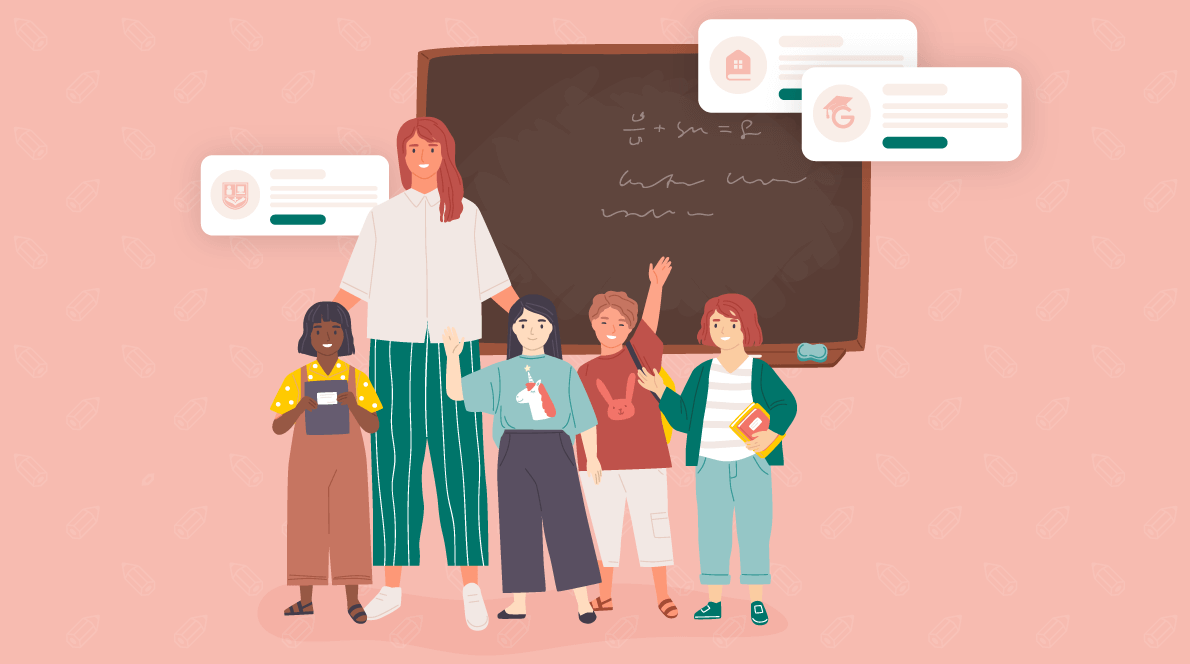
Our team includes game designers as well as educators, 3D modeling experts, and engineers. They are quick and passionate about education and work efficiently. Since 2007, when our first product was launched, we have continuously improved and modified our products in collaboration with educators and students across the country. Read our reviews of Legends of Learning. You can read our overview to learn more about this revolutionary educational software. Read what teachers have to share about Legends of Learning.
Overview of Legends of Learning
If you're looking for a great online resource for teaching kids, you might consider Legends of Learning. These online games have been created to help students reinforce and engage the concepts and lessons they are learning in class. There are many games to help students learn concepts. Each game contains multiple learning objectives and features, such as digital battle bonuses that students can use to customize their avatars and participate in further adventures. Teachers can evaluate students' progress, give simple assessments, and make targeted teaching decisions based on game scores. These learning games are simple to use and can be a rewarding reward for their children after a long day.

Games
A team of engineers, game designers, illustrators, 3D modelers, and game designers is required to create learning games. This team works quickly and is flexible. The team has made many improvements since their initial release and now works closely with educators across the country to improve their products. These improvements have made the product workflow and nomenclature more efficient. We will discuss some of these improvements here.
Assessments
To test the knowledge of your students, you can use assessments for Legend Learning. Once you've created an account, you can access the assessment gallery by using the curated content feature. You can create an assessment by selecting the concept level, and the depth of your knowledge. After you have selected the level, a list with questions will be displayed. Click on the magnifying glasses icon to view multiple choice answers. Click the magnifying glass icon to see the multiple choice answers.
Teachers' reviews
Review by teachers of legend learning is a great way to get an idea of how it works in the classroom. Teachers can comment on the game and leave private notes to the developers, which is different from other review sites. User problems, suggestions for improving it, and other suggestions can be included in the comments. Teachers can create playlists to suit their students' needs. Administrators also have the option of creating playlists that can be tailored to specific skill levels and subject matter.
Tutors' high-achievement methods
Numerous researchers have studied the effects of tutors’ subject-matter expertise upon student achievement and effort. The current study examines the effects of tutors' subject expertise and how tutors can improve students’ outcomes. The results also highlight differences between subject-matter experts and novices, and reveal the influence of both factors on student outcomes. The study shows that students' academic performance is directly affected by tutors' process-facilitation and knowledge-related behavior.

Pricing
Legends of Learning, an educational game platform that helps students learn, is the best choice. This game-based learning platform uses over 2,000 games to reinforce lessons and reinforce concepts from in-class discussions. It's currently being used in schools across the US and has raised $5,000,000 in seed financing. With its focus on engagement, lesson comprehension, and test performance, Legends of Learning offers teachers an excellent resource for transforming traditional teaching experiences into something that students will enjoy.
FAQ
How can I apply to college
There are many ways to apply for college. Start by speaking with your high school admissions counselor. Online applications are popular among high schools. You can also get in touch with local colleges. Most colleges accept applications online through their websites.
If you are applying by mail you will need to fill in the application, submit a personal statement and copies of all required documents. Your personal statement is a chance to explain why you are interested in attending this institution and what it would mean for you. It helps the admissions team understand your motivations and goals.
Our website contains sample essays you can download.
How do you get scholarships?
Scholarships can be granted to help cover college expenses. There are many types and types of scholarships. These are:
-
Federal Grants
-
State Grants
-
Student Loans
-
Work Study Programs
-
Financial Aid
Federal grants come directly to the U.S. Federal grants usually require applicants to meet specific requirements. Financial need is one example.
State grants can be offered by the individual states. State grants can be offered by each state based upon financial need, while others are given for specific purposes.
Banks and other lending institutions can issue student loans. Students borrow money to pay tuition and other living expenses.
Work-study programs encourage employers to hire qualified student workers. Employers must pay at least the minimum wage to their employees.
Financial aid is available to help low-income families pay for college. It covers all or most of the tuition costs.
Is it better to be a specialist in one subject than in another?
Many students prefer to be a specialist in one subject (e.g. English, History or Math) rather than pursuing multiple subjects. It is not always necessary to become a specialist. For example, if you're considering becoming a physician, you could choose to specialize in either internal medicine or surgery. You can also choose to be a general practitioner, specializing either in pediatrics or family practice, psychiatry, gerontology, or neurology. If you are considering a career in the business world, you might focus on marketing, sales, finance, operations research, marketing management, and human resources. The decision is up to you.
What is the difference between school and college?
Schools are often divided into classes or grades, with one teacher teaching a class of students. Colleges are larger institutions that offer more specialized programs and include many university-level courses. The majority of schools focus on core subjects, while colleges offer more specialized programs. The curriculum at both levels is intended to prepare students to study at higher levels.
What does it mean to be a teacher in early childhood education?
An early childhood teacher must have specific training. Most states require teachers to be certified by their state boards before they can work in public schools.
Some states require teachers passing tests in math and reading.
Some states require that teachers have completed a minimum number of courses related to early childhood education.
Most states have minimum requirements that teachers must know. These requirements are not the same in every state.
Statistics
- In most developed countries, a high proportion of the population (up to 50%) now enters higher education at some time in their lives. (en.wikipedia.org)
- These institutions can vary according to different contexts.[83] (en.wikipedia.org)
- They are more likely to graduate high school (25%) and finish college (116%). (habitatbroward.org)
- “Children of homeowners are 116% more likely to graduate from college than children of renters of the same age, race, and income. (habitatbroward.org)
- Data from the Department of Education reveal that, among 2008 college graduates, 92.8 percent of humanities majors have voted at least once since finishing school. (bostonreview.net)
External Links
How To
What is vocational education?
Vocational Education prepares students for work by giving them skills that are required for a specific job, such as welding. You can also get on-the job training through apprenticeship programs. Vocational Education is different than general education. It focuses on specific careers and not learning broad knowledge for the future. Vocational training is not designed to prepare individuals for university but rather to assist them in finding jobs upon graduation.
Vocational education could be offered at all levels, including primary schools, secondary school, colleges and universities, technical schools, trade schools as well community colleges, junior college, and four-year schools. In addition, there are many specialized schools such as culinary arts schools, nursing schools, law schools, medical schools, dental schools, veterinary medicine schools, firefighting schools, police academies, military academies, and other military schools. Many of these schools offer both academic instruction and practical experiences.
A number of countries have made significant investments in vocational education over recent decades; for example, Australia, Denmark, Finland, Germany, Ireland, Japan, Luxembourg, New Zealand, Norway, Poland, Sweden, Switzerland, the United Kingdom, and the United States. The effectiveness of vocational education is still controversial. Some critics claim it is not effective in improving students' employability. Others argue that it helps them prepare for life after school.
According to the U.S. Bureau of Labor Statistics, 47% of Americans have a degree or certificate related to their current occupation. This percentage is higher among those with higher education. 71% percent of the 25-29 year olds with a bachelor's degree are currently working in fields that require postsecondary credentials.
The BLS reported that almost half the adult population of the country had at least one form of postsecondary credential as of 2012. A third of Americans have a two-year associate's degree and 10% hold a four year bachelor's degree. One out of five Americans held a master's degree or doctorate.
For those with a bachelor’s degree, the median annual income was $50,000. This is compared to $23,800 if you don't have one. The median income for those with advanced degrees was $81,300.
The median wage for those who didn't complete high school was $15,200. The median annual income for those with less than a high-school diploma was $13,000